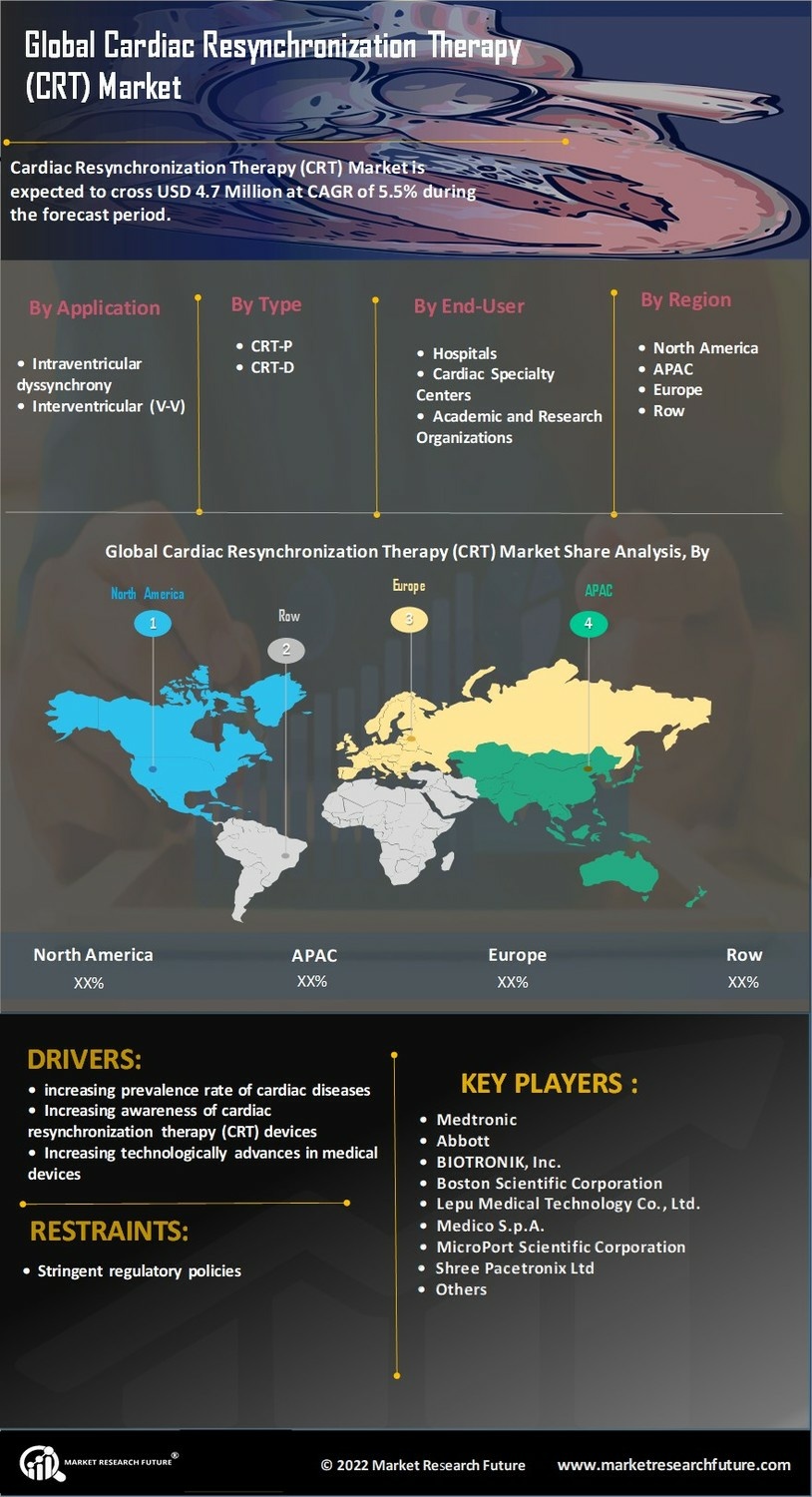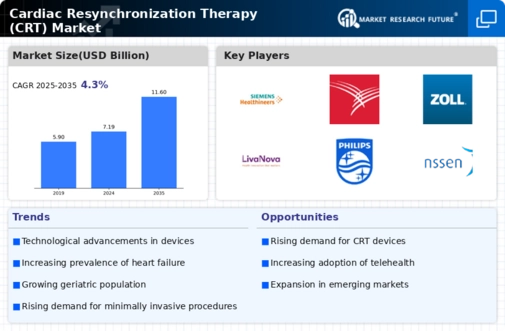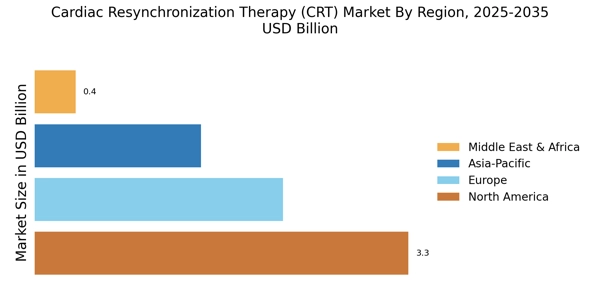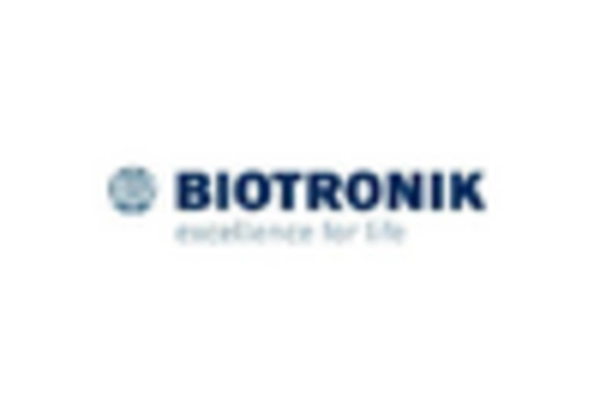Rising Prevalence of Heart Failure
The increasing incidence of heart failure is a primary driver for the Cardiac Resynchronization Therapy Market (CRT) Market. As populations age, the prevalence of cardiovascular diseases rises, leading to a greater demand for effective treatment options. According to recent data, heart failure affects millions worldwide, with projections indicating that by 2030, approximately 8 million individuals in the United States alone will be diagnosed with heart failure. This growing patient population necessitates advanced therapies, such as CRT, which has been shown to improve outcomes in patients with heart failure. Consequently, the rising prevalence of heart failure is likely to propel the CRT market, as healthcare providers seek innovative solutions to manage this chronic condition.
Increased Focus on Patient-Centric Care
The shift towards patient-centric care is reshaping the Cardiac Resynchronization Therapy Market (CRT) Market. Healthcare providers are increasingly prioritizing individualized treatment plans that consider patients' unique needs and preferences. This trend is particularly relevant in the context of CRT, where patient selection and device optimization are critical for achieving optimal outcomes. The emphasis on shared decision-making and patient education is likely to enhance patient engagement and adherence to therapy. Moreover, as patients become more informed about their treatment options, the demand for CRT is expected to rise, further driving market growth. This focus on patient-centric care aligns with broader healthcare trends aimed at improving quality of life for individuals with heart failure.
Technological Innovations in CRT Devices
Technological advancements in cardiac devices are significantly influencing the Cardiac Resynchronization Therapy Market (CRT) Market. Innovations such as improved lead designs, enhanced programming capabilities, and remote monitoring systems are enhancing the efficacy and safety of CRT. For instance, the introduction of multipoint pacing technology allows for more precise synchronization of heart contractions, potentially leading to better patient outcomes. Furthermore, the integration of wireless technology facilitates remote patient monitoring, enabling timely interventions and reducing hospital readmissions. As these technologies continue to evolve, they are expected to attract more healthcare providers and patients to CRT, thereby expanding the market.
Regulatory Support and Reimbursement Policies
Supportive regulatory frameworks and favorable reimbursement policies are vital drivers for the Cardiac Resynchronization Therapy Market (CRT) Market. Regulatory agencies are increasingly recognizing the importance of CRT in managing heart failure, leading to streamlined approval processes for new devices and technologies. Additionally, many healthcare systems are implementing reimbursement policies that cover CRT procedures, making them more accessible to patients. This financial support encourages healthcare providers to adopt CRT as a standard treatment option for eligible patients. As reimbursement policies continue to evolve, they are likely to enhance the market landscape for CRT, promoting wider adoption and utilization of these life-saving therapies.
Growing Investment in Healthcare Infrastructure
The expansion of healthcare infrastructure is a crucial driver for the Cardiac Resynchronization Therapy Market (CRT) Market. Governments and private sectors are increasingly investing in healthcare facilities, particularly in regions with high cardiovascular disease burdens. This investment is aimed at enhancing access to advanced medical technologies, including CRT devices. For example, the establishment of specialized cardiac care centers is likely to improve patient access to CRT, thereby increasing adoption rates. Additionally, improved healthcare infrastructure can facilitate better training for healthcare professionals, ensuring that they are equipped to implement CRT effectively. As a result, the growth of healthcare infrastructure is expected to positively impact the CRT market.


















Leave a Comment